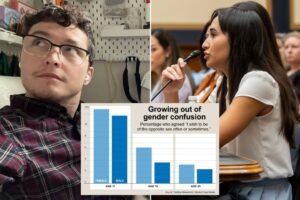
[ad_1]
The Alabama Supreme Court has ruled that frozen embryos are “children,” with potentially far-reaching implications for fertility clinics and in-vitro fertilization.
The ruling appeared to be based on an extremely literal interpretation of the Wrongful Death of a Minor Act, which the majority opinion called “sweeping and unqualified,” thus applying to “all children, born and unborn, without limitation.”
The lack of limitation extends to the “location” of the unborn children, the justices said, meaning it does not matter whether the embryo in question is inside or outside a womb.
Alabama’s constitution holds that each person was made in God’s image, which means they can’t be destroyed without incurring the deity’s wrath, Huffington Post noted. As such, the justices even invoked the Bible throughout the 131-page ruling.
This particular case involved a wrongful-death lawsuit brought by patients of a fertility clinic, the Center for Reproductive Medicine, after their embryos were accidentally dropped and destroyed when a patient removed them from a cryogenic storage unit. Two lawsuits were filed, according to The Hill, one regarding the Wrongful Death of a Minor Act and the other seeking compensatory damages on grounds of negligence.
A circuit court judge had dismissed the initial case, and the couples had appealed. The state supreme court reversed that decision.
“It is not the role of this Court to craft a new limitation based on our own view of what is or is not wise public policy,” wrote Alabama Supreme Court Justice Jay Mitchell. “That is especially true where, as here, the People of this State have adopted a Constitutional amendment directly aimed at stopping courts from excluding ‘unborn life’ from legal protection.”
Reproductive rights experts — doctors and advocates alike — said the ruling could endanger IVF overall, reported AL.com.
Alabama Supreme Court Justice Greg Cook pointed out in a dissenting opinion that the law was written in 1872, long before frozen embryos were a technological possibility.
[ad_2]
Source link





